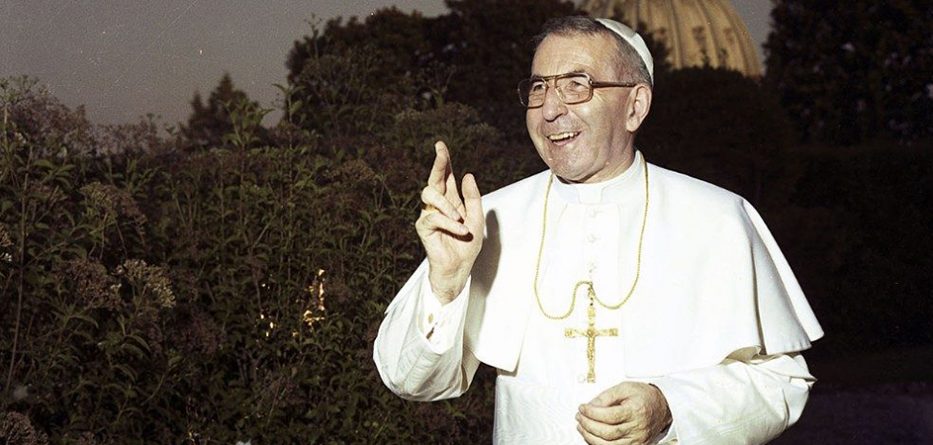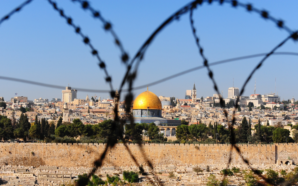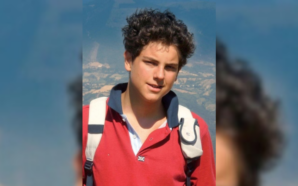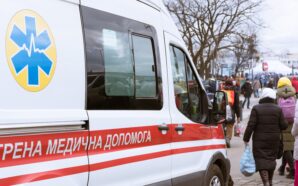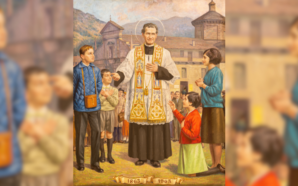The first time that a Bishop of Belluno-Feltre, Maffeo Ducoli, after repeated requests, spoke to the Congregation for Saints about opening the cause for the beatification of John Paul I, it was pointed out to him that, in addition to the already canonized Pius X, the causes of Pius IX, Pius XII, John XXIII and Paul VI were underway and, perhaps for the time being, these popes would suffice. He therefore set aside the idea, even though the Brazilian bishops in 1990 had already presented John Paul II with a petition, signed by the 226 members of the Conference, communicating the aspirations of their faithful regarding the opening of the cause.
The next bishop of Belluno-Feltre, Vincenzo Savio, continuing to receive many requests, resumed the initiative in the early 2000s, asking that the site of the diocesan inquiry be his diocese and not Rome, the place of Pope Luciani’s death, given the brevity of his stay in the eternal city. In 2003, the Congregation granted the nulla osta. In the lengthy work carried out in the diocesan and subsequent Roman phases of the process, as many as 188 witnesses of every ecclesial status were heard, including Pope Emeritus Benedict XVI, a unique case so far, since a pope “in office” cannot testify, being the judge of the case.
In November 2017, Pope Francis authorized the decree recognizing Luciani’s “heroic virtues,” and in October 2021 a decree concerning the miraculous healing of a little girl in Buenos Aires suffering from acute encephalopathy. This opened the way for the beatification, which will be celebrated on September 4, 2022, in St. Peter’s.
The seminarian and the priest from Belluno
Albino Luciani was born October 17, 1912, in Forno di Canale (now Canale d’Agordo), Belluno, to a family of modest circumstances. He was immediately baptized by the midwife because his life was in danger.[1] His father John, a man of socialist views, worked as a seasonal migrant, from March to November for 27 years, in Germany, France, Switzerland and Argentina. The years of World War I, and especially the Austrian advance after the rout of Caporetto, were very hard, a time of real misery. His mother Bortola, a fervent Catholic, brought her husband closer to the faith, so much so that he granted their son Albino permission to enter the seminary in 1923 and take the path to the priesthood.
The course of his formation was ordinary. It was a vocation without interruptions or uncertainties. First his studies in the minor seminary of Feltre, then high school and theology in the seminary of Belluno. A key figure of his youth was the parish priest of Canale, Fr. Filippo Carli, a model of priestly life and intelligent encouragement of the young seminarian’s talents. For example, from an early age Albino was an avid reader, a devourer of books. So Fr. Filippo commissioned him to catalog the old parish library and encouraged him to write in the new parish bulletin, always in a simple and clear style. During theology, Albino felt the attraction of religious life and asked the bishop for permission to join the Society of Jesus, as did two of his companions,[2] but the request was not granted and he calmly continued in his vocation to the diocesan clergy.
He was ordained priest in 1935. Albino was not yet 23 years old, but he received the necessary canonical dispensation for ordination. His first ministry was in Agordo, as a parish assistant and religion teacher in the school. At this time he joined the Apostolic Union of the Clergy, a fellowship whose members make a commitment to an intense and faithful spiritual and prayer life, even among the obligations of a very active apostolate of service. After only two years he was appointed vice-rector of the Gregorian Seminary in Belluno.
He spent 10 full years in this role, collaborating with the strong personality of the new rector, Monsignor Santin, who chose him despite his young age. First and foremost, the vice-rector was in charge of discipline, of order in the activities of the seminarians throughout the entire day, which began with rising at 5:40 a.m. and ending at 9 or 10 p.m. For his personal prayer Fr. Albino regularly rose around 4 a.m. In addition to vigilance, he also taught subjects ranging from dogmatic theology to canon law, philosophy, art history and homiletics. As vice-rector he was described as rigorous and very observant; nothing escaped him, but he was patient and not authoritarian, close to the young seminarians and available for advice and comfort. In teaching he was clear and pedagogically effective, aided by an exceptional memory and a culture that was continually nurtured by much reading, even at night.[3] His lectures were well prepared and memorized, needing no reliance on the written text. This particular characteristic will be found in his preaching and teaching up to and including his pontificate.
For a more qualified teaching, it was appropriate that the seminary professors had adequate training and academic degrees. However, neither the rector nor the bishop were willing to deprive themselves of Luciani’s presence as vice-rector. Hence there was a request to the competent Sacred Congregation that Luciani enrol at the Gregorian University to obtain a licentiate and doctorate in theology but be dispensed from the obligation of attendance. Despite great difficulty, the dispensation was obtained. The encouragement, friendship and support of Fr. Felice Cappello, a Jesuit, authoritative canonist at the Gregorian and Luciani’s “countryman” should be remembered in this regard.
Thus it was that Fr. Albino was able to obtain a licentiate in theology in 1942, and a degree in 1947, magna cum laude, with a thesis on L’origine dell’anima umana secondo Antonio Rosmini[4] (“The origin of the soul according to Antonio Rosmini”). But the achievement of these goals had required exceptional effort. No wonder, then, that his health was compromised as a result. For a few months Fr. Albino was hospitalized in the sanatorium in Belluno, and after convalescence a second hospitalization became necessary, which was fortunately shorter. But the strenuous assignment as vice-rector came to an end.
Although commitment to the seminary and to study characterized the everyday life of this decade of Luciani’s life, it should not be forgotten that this was at the same time the dramatic period of World War II and, after September 8, 1943, of the partisan struggle, which was fought throughout the Belluno area. In this period, during a German reprisal and partisan reaction in August 1944, Don Albino’s intervention to save some kidnapped men from being shot.
Bishop Girolamo Bortignon, who during the war became a very young bishop of Belluno, held Fr. Albino in high esteem and entrusted him with tasks of increasing responsibility in the life of the diocese. In 1947 he was the episcopal pro-chancellor and secretary of the diocesan synod, in 1949 pro-vicar and director of the catechetical office. In the field of catechesis Fr. Albino demonstrated not only a great commitment but a true gift, the expression of which is the small 1949 volume Catechetica in briciole (Catechetics in Crumbs) for the formation of catechists: a writing of clarity, practical application and wisdom that does not fail to arouse admiration 70 years later.[5] It is immediately clear that its author, at every stage of his life, would devote the best of himself to faith formation, with children, young people and adults.
The new bishop, Gioacchino Muccin, appointed him vicar general in 1954, so that his involvement in the government of the diocese continued to grow, both in the administrative and apostolic fields (for example, in the training of young people involved in Belluno’s social and political life). But it is worth noting that in these years he also developed his publishing activity in the diocesan weekly L’Amico del popolo – which was never interrupted between 1941 and 1956 – without shying away from topical issues. It should not be forgotten that in 1948 the electoral climate had become heated and the Church had sided with the Christian Democrats. Luciani remained ever committed to writing. It can be said that he was a true journalist, with a fluent and effective style. But his commitment was not limited to the press and extended to other media. In 1956 he promoted the first people’s Cineforum, showing himself to be an active participant in a form of dialogue and the presence of Italian Catholics in the culture of the time, then in full development.
The bishop of the Second Vatican Council
It is natural that the bishops who had chosen him as their main collaborator – Bortignon (in the meantime transferred to Padua) and Muccin – proposed him for the episcopate. At the beginning of John XXIII’s pontificate Fr. Albino was appointed bishop of Vittorio Veneto. Ordained by the pope himself in St. Peter’s in late December 1958, he entered the diocese a few days later. He was 46 years old.
This period would also last exactly a decade and would be decisive in Luciani’s life. The spiritual disposition with which he welcomed the new order of service was deep and clear, as he himself wrote in his first letter to the diocese: “I am the dust; the distinguished episcopal dignity and the diocese of Vittorio Veneto are the beautiful things that God has deigned to write on me.”[6] The episcopal motto he chose was the single word, humilitas, following the example of St. Charles Borromeo.
The new bishop totally immersed himself in pastoral life, devoted himself to the formation of the clergy and the laity, aware of the transformations taking place in Italian society, took care of catechesis, made two pastoral visits of the entire diocese, led an austere life, well ordered in the combination of religious practices and study, as well as visits to the sick. Sometimes the first morning appointment was scheduled as early as seven o’clock! His relationship with the nuns involved in the bishop’s residence was simple and familiar, full of respect and kindness. They were the Sisters of Maria Bambina, and included Sister Vincenza Taffarel, who would accompany him faithfully throughout his life, in Venice and finally in Rome.
But in the early years of his episcopate there was no shortage of difficulties. In 1962 a very serious situation of financial instability in the diocese came to light, for which two priests were responsible. The bishop courageously tackled the problem, moving promptly and wisely, and succeeded in a few months in finding satisfactory solutions, for which he received from bishops, priests, authorities and lay people testimonies of solidarity and admiration. He succeeded in combining respect for the rights of creditors, cooperation with civil justice, charity toward convicted offenders, and giving clear information to the diocese involved in the sacrifices to be faced: in short, a model of courageous and transparent intervention.
But Luciani’s period in Vittorio Veneto is characterized above all by his participation in the Second Vatican Council, in all four of its sessions, from 1962 to 1965. He never spoke in the Council Hall, voting only during the preparation and a written intervention on episcopal collegiality in 1963; but he was always present with lively attention, taking notes and studying the documents in depth, as appears from his annotations and observations on the drafts of the texts.[7] His humble and intelligent participation was accompanied by keeping himself assiduously informed about his diocese and transmitting the conciliar orientations and teachings through his writings and spoken word. He manifested enthusiasm for liturgical reform and was committed to its implementation, and he initiated diocesan pastoral and presbyteral councils.
The novelty of the Council surprised him and involved him in a patient and profound journey toward broader horizons. He lived the novelty in continuity and with full readiness, and was wary of superficial enthusiasms and mere verbal emphasis on the “signs of the times,” “aggiornamento” or the “Church-world relationship.” He carefully reflected on the theological positions presented by the best prepared European episcopates, developed knowledge and relationships with many bishops across the globe. These meetings were at the origin of his increased interest in missions and his subsequent trips to Africa and Brazil. His ecclesial and spiritual experience during the years of the Council developed in him a very deep harmony with Paul VI and his leadership of the Church, which was at the same time courageous, prudent and balanced. It can well be said that Luciani’s episcopate reflects at the diocesan level the spirit and style of Paul VI’s papacy.
The Luciani of the 1960s after the Council was a bishop who was always very faithful to his diocesan commitments, but more involved in the Triveneto Bishops’ Conference and who had to confront the very difficult challenges of changes in Italian and European culture and society. We find him engaged in the problems of the world of work and labor struggles, in the debate on Italian divorce legislation, in the tensions of “contestation,” which was spreading also in the Church with the consequent crisis of vocations, in the debate on the relations between the tasks of the magisterium and the freedom of research of theologians. Noteworthy is the intensity of study and reflection with which he involved himself in the delicate and much-debated issue of birth control. His pastoral sensibility made him lean toward a “possibilist” position, offering the affective and sexual life of married couples a “moderate freedom,” without a selfish preclusion of life. It has been said that “his intent was not to betray the Gospel and not to place too great a burden on married couples.” His position was thus different from that which was to be taken by Paul VI in Humanae Vitae, to which, however, he readily and fully conformed, not without always reading and interpreting it in the light of a vision rich in understanding and mercy.
Patriarch of Venice at a difficult time
In the fall of 1969 the patriarch of Venice, Cardinal Giovanni Urbani, died suddenly and on December 15 Paul VI announced the nomination of Luciani as his successor. A new stage then, still in the Veneto region, but in a different social and urban context, with ever broader responsibilities and horizons. Luciani became president of the Triveneto Bishops’ Conference, entered the presidency of the Italian Bishops’ Conference and was elected its vice-president. Paul VI named him a member of the 1971 Synod of Bishops, and when he visited Venice in 1972, he made the famous and unexpected gesture of imposing his own stole on him in front of the people in St. Mark’s Square; finally in 1973 he created him cardinal.
In his life and pastoral style, the new patriarch remained true to himself, sober and attentive to the poor and the sick, simple and amiable in manner. In his homily on his entry into the diocese, on February 8, 1970, the theme of “dust” returned: “If I am not discouraged in the face of an undertaking that makes veins and wrists tremble, it is because I trust in the help that the Lord grants even to those who are worth little. For God sometimes likes to write certain great things not on bronze or marble, but on dust, so that if the writing remains, not in disarray or scattered by the wind, it will be clear that the credit is all and only God’s. I am the dust: the office of patriarch and the diocese of Venice are the great things united with the dust; if some good comes out of this union, it is clear that it will all be thanks to the Lord’s mercy.”[8]
Luciani did not write a programmatic document. He would intervene with homilies and letters regarding major appointments of the Italian Church, with articles for the Venetian newspaper Il Gazzettino and for the diocesan weekly – first La Voce di San Marco and then Gente veneta – and in the popular magazine Messaggero di Sant’Antonio. His monthly contributions to this periodical, in the original form of the letter to famous people, in a colloquial style, always on topical issues, was collected in the volume Illustrissimi, his best-known work.[9] Luciani was an accomplished writer and preacher. The simplicity of his language should not deceive: the texts are well edited, rich in examples and references taken from great authors, even if these are often not explicitly quoted. His culture is not exhibited; it is lived and assimilated so deeply that it expresses itself spontaneously in a great variety of interventions on spiritual, pastoral, moral, social and educational themes that the bishop had to deal with over the years. The patriarch was always very committed to supporting and promoting the Catholic press.
During his Venetian years, Luciani participated in the three Synods of Bishops: in 1971, 1974, and 1977. This consolidated his knowledge, his relationships and his sense of belonging to the universal Church. The 1977 Synod was dedicated to catechesis, a subject in which his expertise and experience were of the first order and on which the Church in Italy has made a great deal of progress in drafting the new catechisms. The patriarch’s contribution during the preparation and in the Synod itself deserves to be remembered. The transmission of the faith was the joy and priority commitment of his life.
The situation of the diocese inherited from Cardinal Urbani was not easy, and Luciani, who unlike his predecessor did not come from the Venetian clergy, had to govern it in the critical time after the Council, with all its tensions. To reread those years is to retrace a dynamic but also very troubled period in the history of the Italian Church. It was the time of the “socialist choice” of the ACLI and their break with the bishops; of the “historic compromise” and the discussion on collaboration with the Marxists; of terrorism; of the crisis of Catholic Action; of the divisions at the referendum on divorce and the positions of the “democratic Catholics,” of “Catholic dissent,” which manifested itself in various forms, in the press as well as in local situations. In Venice, as in many other Italian cities, situations of conflict arose between the bishop and some communities: in particular, with the community of San Trovaso, and of the FUCI. There was no shortage of problems with the teaching of theology in the seminary, as with excessive liberties in the implementation of liturgical renewal in certain parishes.
Luciani was a person of dialogue, but also of firm positions, to which he considered himself obliged to take by reason of his ministry as a bishop. In general, his interventions follow very clear registers: the doctrine of the Church and the role of the magisterium in the Church are not questioned; both evangelization and human promotion are part of the Church’s mission, but the first precedes the second. As a result, there was no shortage of rifts, which resisted healing, and moments of great suffering.[10] But his sense of responsibility and prudence, fidelity to the tradition of the Church and solidarity with the pope and his brother bishops attracted him growing esteem and trust in the Italian Church and beyond. Once again, we cannot fail to observe that the crosses of Paul VI’s pontificate and the spirit with which they were carried find a profound parallel in Luciani’s episcopate.
‘The Space of a Smile’
Perhaps this is also why on Paul VI’s death, to his surprise, Luciani was elected pope after a very short conclave. His continuity with Pope Paul VI’s line had probably become much clearer to the electors over time than he thought. “Yesterday morning I was at peace when I went to the Sistine to vote. Never would I have imagined what was going to happen,” he would say at the Sunday Angelus on August 27, 1978.
If the eight and a half years of his Venetian patriarchate leave the memory of a time of generous and faithful ecclesial service, but also of difficulty and suffering, the very short month of his pontificate, despite its sudden and unexpected conclusion, leaves an indelible memory of serenity and light. As has been said effectively, it was “the space of a smile.”
It took only a few days to see and hear lasting novelties. No longer the coronation rite and the tiara, which Paul VI had renounced for the benefit of the poor; no longer the royal and papal “We” in his speeches and catecheses, which took on an unmistakably simple and direct style and manifested his desire to make himself understood by everyone, even the humblest people. There was the original freedom to take on a double name, that of “John Paul” which, taken up by his successor, we heard repeated for decades to come. It evokes in itself the Council, the renewal of the Church in our time, the two pontiffs – now proclaimed saints – to whom Bishop Luciani felt himself a disciple and a debtor.
The pontificate opened with an inaugural message in Latin that – articulated in six “ wants” – expressed the points of a program of full continuity: implementation of the Council, custody of the Church’s great tradition, primacy of evangelization, ecumenism, dialogue, service of peace. However, the five short Sunday Angelus addresses and the four general audiences on the virtues of humility, faith, hope and charity will remain most deeply etched in memory. We can add the pope’s attention to and prayer for the Middle East peace talks at Camp David, a handful of audiences and several official letters.
But perhaps the speech most worth remembering is the one he gave on August 30 to the college of cardinals who elected him. It was published for the first time a few weeks ago, because until now only an official text had been circulated, almost unbearable in its majestic courtly language, and therefore left completely aside by the pope.[11] Instead, in the transcript of the recording kept at Vatican Radio we find all the spontaneity of Pope Luciani. Let us listen to a few excerpts: “Here I see Cardinal Felici. With his usual amiability, before all the votes had been counted, over he came, because he was just in front of me, and said, ‘A message for the new pope.’ “Thank you,” I said, but I wasn’t done yet. I opened it. What was there? A little Way of the Cross. That is the way of the popes. However, in the Way of the Cross one of the characters is also the Cyrenian. I hope my brother cardinals will help this poor Christ, Vicar of Christ, carry the cross with their cooperation, which I feel so much need of… At the Council we tried to give with biblical phrases some idea of the Church, “vineyard of Christ, family, flock of the Lord, people of God,” etc. No one that I know of dared to say – it would not have been biblical – that the Church is also, at least in its external organization, a clock that, with its hands, marks out certain directives to the world. It can also be said this way: but then those who silently wind it up every day, wind and wind, are those of the Congregation, a humble, hidden work, very valuable, which must be appreciated, of which I am completely ignorant… The first thing I did, as soon as I became pope – I had some time – was pick up the yearbook, study it a little bit… the organs of the Holy See, so ignorant and distant from knowing well the gears of the Holy See. I hope you can help me.” And after reading at the end the official text of the apostolic blessing, “In the name of Christ I impart… the first fruits of my propitiatory Apostolic Blessing,” Pope Luciani could not refrain from commenting, “A bit courtly this language. Be patient! Should I give the blessing? Sit nomen Domini benedictum….”
Much has been written about the unexpected death of Pope Luciani and its causes. We will not dwell on it. The suspicions and confusion were fostered by the decision of the authorities of the Secretariat of State – taken by surprise at the events on the morning of September 29 – to give, in the official press release of the Press Office, a version that was not true. It said there that the pope had been found dead by the special secretary, Fr. John Magee. Instead he had been found by Sister Vincenza Taffarel, accompanied by Sister Margherita Marin, who were concerned because the pope had not yet gone to pray in the chapel at the usual time, shortly after 5 a.m. The pope was in his bed, still holding in his hands the papers he was reading, in a composed attitude and with a slight smile, crushed the night before by an entirely sudden death. However, it had seemed improper to the monsignors to say that the dead pope had been found by two nuns who had entered his room, and they had ordered them to stick to the official version.
On the occasion of the collection of documents for the beatification in 2009, the testimony of Sister Margherita Marin, the only one still alive among the four nuns present in the papal apartments in those days, was finally authoritatively requested, and her precise narration dispels all doubts. The nun’s account – which was later also videotaped for all to see and hear – is truly touching. The Documented Biography reconstructs, in an entirely comprehensive manner, the events of the pope’s last days, the discovery of his body, and reports the statements of the doctor, Dr. Renato Buzzonetti, who certified the death and considered it a sudden, natural, instantaneous death, which presumably occurred around 11 p.m. from acute myocardial infarction. An extensive and complete medical history of Pope Luciani’s health throughout his life until his last days is also added. In conclusion, it appears that his sudden death was not foreseeable.[12]
What holiness?
In conclusion, we may ask what are the characteristics of Albino Luciani’s holiness?
Among the virtues, humility stands out. When he speaks of himself as “dust,” Luciani does not manifest an affected or contrived attitude. It is exactly what he thinks: he recognizes himself as called by grace to a service greater than himself. Speaking of the personal documents left behind by Pope Luciani and commenting on their paucity compared to those of other figures, the prefect of the Vatican Apostolic Archives, Monsignor Sergio Pagano, made a very telling observation: “In his innate humility, John Paul I did not think at all that he would go down in history.”[13] When he was elected pope, people in Vittorio Veneto who knew him well, said, “By dint of backing down he became pope!” On the intensity and fidelity of his prayer life, the mirror of a lived faith, as well as on his charity toward others, starting with the sick and the poor, one could report endless testimonies. But it is not necessary.
Instead, we believe it is important to highlight that his witness was that of a priest, and especially of a bishop, who lived his mission to the full, day after day, in humility, in poverty and a spirit of service. The Second Vatican Council emphasized the bishop’s ministry, his responsibility to serve the people entrusted to him, in union with the pope and in the context of episcopal collegiality. Luciani was certainly a model of this. Speaking to the cardinals who elected him pope, he recalled – with some nostalgia – his service in the diocese: “My work was: youth, workers, the sick, pastoral visits. I will no longer be able to do this work. But you can. However, you must not think only of your diocese. Bishops must also think of the universal Church.”[14] For fidelity to his mission, Luciani had to suffer and knew how to suffer, showing fortitude even in his natural timidity. This is a point on which the then Cardinal Ratzinger insisted: “Personally, I am most convinced that he was a saint. For his great goodness, simplicity and humility. And for his great courage. Because he also had the courage to say things with great clarity, even going against current opinions. And also for his great culture of faith. […] He was a man of great theological culture and great pastoral sense and experience.”[15]
The aspect of holiness for which in the end we most like to remember John Paul I, and which best manifested itself to the whole world in his very short pontificate, is the joy he lived in the proclamation of the Gospel, in his unparalleled catechesis directed to all, beginning with the small and simple. Speaking of him in the pages of this magazine, a few days after his death, one of our dear confreres wrote this: “These plain conversations, within the reach of all, represent the summit of a life dedicated entirely to the contemplation of divine things and to the elaboration of a way of communicating them that was both real and compelling. The call to Christian joy and serenity, made at a time that was not without grave concerns for the pope, tells us that life is a gift that must be received with love and offered without calculation. For those who live in the light of the Lord, it is no small thing to be able to die with a smile on one’s face.”[16]
His was a fully realized vocation as a teacher of the faith.
Federico Lombardi SJ is the Emeritus editor of La Civiltà Cattolica.
Reproduced with permission from La Civiltà Cattolica.
DOI: La Civiltà Cattolica, En. Ed. Vol. 6, no.8 art. 10, 0822: 10.32009/22072446.0822.10
[1]. The most complete biography of John Paul I is the one compiled for the Positio of the cause of beatification, constituting the fourth of its five volumes. A separate first edition was authorized in 2018, and in 2020 it was edited by the John Paul I Vatican Foundation and the Libreria Editrice Vaticana: S. Falasca – D. Fiocco – M. Velati, Giovanni Paolo I. Biografia ex documentis, with a preface by Cardinal Beniamino Stella. This is a large-format volume of 984 pages, with over 4,300 notes. We relied on it for this article.
[2]. One was Fr. Roberto Busa, who would become known for his application of computer science to the linguistic analysis of the texts of St. Thomas, and would remain Luciani’s lifelong friend.
[3]. The list of authors Albino Luciani frequented and loved, which were quoted by him in his writings and speeches, is vast. We can mention only a few of them. Among them were: St. Augustine, St. Gregory the Great, St. Bernard, St. Francis de Sales, St. Therese of Lisieux and Charles de Foucauld. Among literary figures: Dante, Petrarch, Shakespeare, Pascal, Molière, Goldoni, Manzoni, Dostoevsky, Papini, Dickens, Chesterton, Trilussa. The breadth of his literary culture is all the more impressive when one considers that it was not due to systematic studies, but to the conviction that great literature enabled him to enter deeply into human affairs and wisdom and was thus the proper tool to nourish his sermo humilis, which spoke of the reality of life and the Gospel in the words of the people.
[4]. The thesis was republished in the first volume of A. Luciani/John Paul I, Opera omnia, edited by G. Fedalto, Padua, Messaggero, 1988. The Opera omnia, in 9 volumes, collects almost all of Luciani’s published writings, including homilies, letters, numerous articles in the Catholic press and similar material.
[5]. This writing is also republished in the first volume of Opera omnia, op. cit.
[6]. A. Luciani/John Paul I, Opera omnia, op. cit., vol. II, 11.
[7]. The documents are preserved in the personal archives of John Paul I, which are kept and studied by the John Paul I Vatican Foundation, chaired by Cardinal Pietro Parolin and directed by its vice-president and the vice-postulator of the cause, Dr. Stefania Falasca. The Foundation is also working to reconstruct Luciani’s personal library, which had always been an invaluable tool for him to study and work with, but which was gradually dispersed.
[8]. A. Luciani/John Paul I, Opera omnia, op. cit., vol. V, 14.
[9]. It too is republished in the first volume of the Opera omnia.
[10]. Dramatic participation, in prayer and absolute silence, kneeling in the presbytery during the funeral of a priest who committed suicide, who had been removed from the parish at the behest of the patriarch (S. Falasca – D. Fiocco – M. Velati, Giovanni Paolo I. Biografia ex documentis, op. cit., No. 1, 508).
[11]. It is one of the most interesting texts in the new volume, Giovanni Paolo I, Il Magistero. Testi e documenti del Pontificato, edited by the John Paul I Vatican Foundation, Libr. Ed. Vaticana – San Paolo, 2022, 67-75. The 470-page volume includes all the texts from the month of his pontificate, not only in the official version already published, but also – in contrast to this – the texts actually delivered, with all additions and variants taken from the transcription of the recordings kept at Vatican Radio. In addition, the autograph diary and block-notes of the pontificate are reproduced in full, with their meticulous transcription and an extensive set of notes: one can thus penetrate the dynamics of the preparation of the pope’s speeches.
[12]. We believe that the entire Chapter XII of the Biografia ex documentis can be considered completely reliable and definitive. Any conspiratorial or fanciful assumptions about the death of Pope Luciani can be safely dismissed.
[13]. Talk at the Study Day: “Il magistero di Giovanni Paolo I alla luce delle carte d’archivio” organized by the John Paul I Vatican Foundation at the Pontifical Gregorian University, May 13, 2022.
[14]. John Paul I, Il Magistero, op. cit., 72.
[15]. J. Ratzinger, “Il Signore sceglie la nostra povertà”, interview in 30 Days, 2003, Nos. 8-9, 16.
[16]. V. Fantuzzi, “La catechesi di Giovanni Paolo”, in Civ. Catt. 1978 IV 111.




